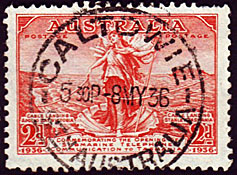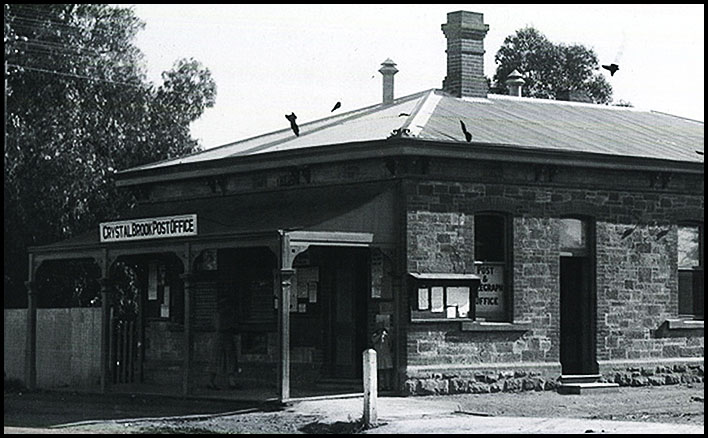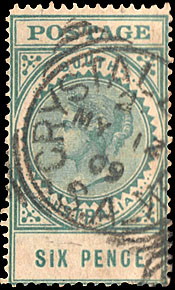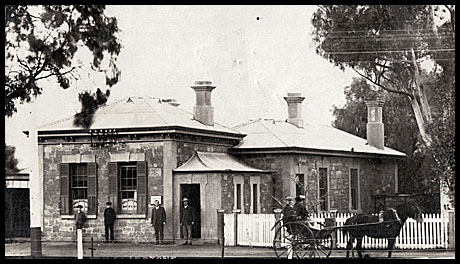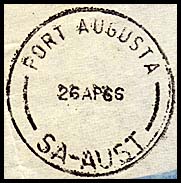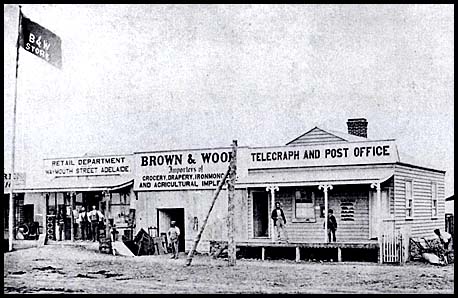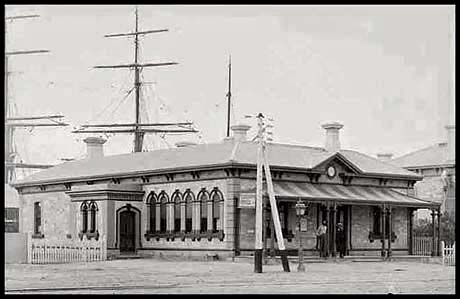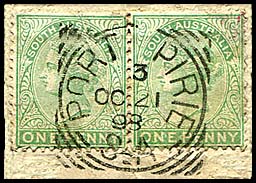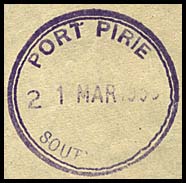Telegraph offices on the upper northern line - Clare-Kooringa to Port Augusta and Quorn.
- Site home & details
- Australia 1901-1988
- New South Wales
- Queensland
- South Australia
- Tasmania
- Victoria
- Western Australia
- International
- Special aspects
Bruce. The Telegraph Office was opened in |
|
The Telegraph Office opened on 5 May 1877. On 23 December 1884, the Council of Jamestown passed a by-law against the Salvation Army marching and band-playing on Sundays. Trouble was anticiapeted after the decision received vice-regal confirmation. |
|
The Telegraph Office (finally) opened on 15 February 1884 with Miss Wissen as the Postmistress. Work on the new Post & Telegraph Office had commenced on 19 June 1883 with the total cost being £738. The buiding was completed during December 1883 but nothing had been done about constructing the telegraph line over the 13 miles from Red Hill - despite a visit in July 1883 by Mr. Knucky of the Telegraph Department to inspect the road. The line was finally completed by the end of January but the office remained closed despite Miss Wissen taking charge of the building on 29 January. The town was named by Edward John Eyre from the aboriginal name meaning "red banks".
|
|
The Telegraph Office was opened in 1866. |
Petersburg The Gazette allocated £783 15s for the construction of the Post & Telegraph Office on 5 May 1882. |
| Port Augusta.
The Telegraph Office was opened in late 1866 although, on 2nd January 1866, the South Australian Advertiser had noted that Port Augusta was one of five locations where "telegraph extension has been sanctioned". It was reported in the newpapers that Mr Todd, Superintendent of Electric Telegraphs, left Adelaide on 24 August 1866 for the purpose of opening the telegraph office at Port Augusta. |
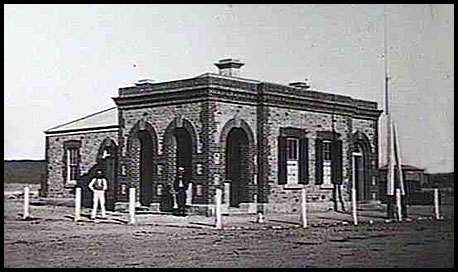 Port Augusta Telegraph Office 1867. Source: Library of South Australia B 47759. |
||
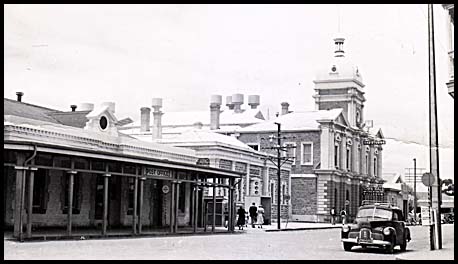 Post Augusta in the 1950s. The Post and Telegraph Office is the low building on the left. The Town Hall is further down the street behind the FJ Holden. |
|||
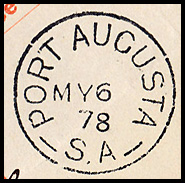 Port Augusta. 6 May 1878. Diameter: 24 mm. Used on SC-DO-6Aa. |
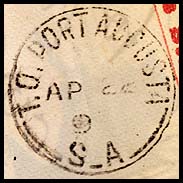 Port Augusta. 22 April 1872. Diameter: 23 mm. Used on SC-DO-7A. |
Used on |
|
Port Germain. The Telegraph Office was opened on 13 August 1880. |
|
The Telegraph Office was opened on 23 September 1880. In February 1880, community agitation for the opening of a Telegraph Office at Quorn was becoming quite vocal. By November 1880, "Mr. Munro, the contractor for the erection of ... the Post and Telegraph Office, has commenced operations, but owing to the fact that 'some one has blundered' is almost at a standstill. The difficulty the Post-Office appears to be some doubt as to the block on which it is to be erected, but no doubt this will be shortly settled". The cost was budgeted at £575. In June 1886, the community was awaiting the letting of a tender for the new P&T Office. |
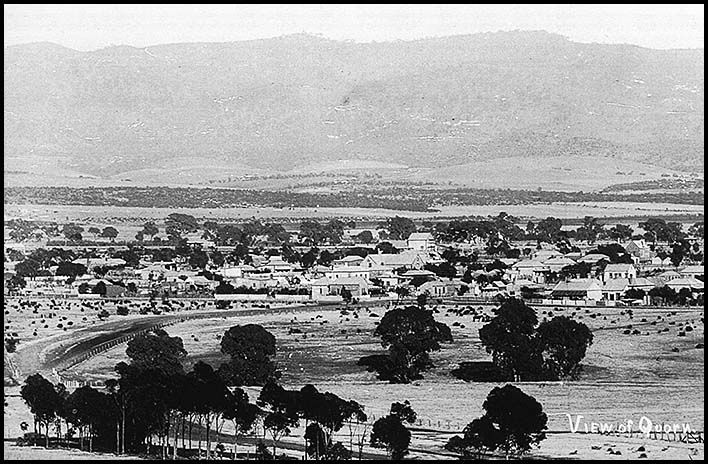 Quorn township about 1910. |
Red Hill 27 December 1877 |
|
The Telegraph Office was opened on 23 August 1880. A deputation met the Minister for a lengthy discussion about the location of the Office on 4 May 1881. |
|
The Telegraph Office opened on 21 March 1877 - presumably in temporary premises. The South Australian Chronicle of 12 May 1877 reported the lively exchange of a deputation which was followed up by an editorial in the Register. |
|
The Telegraph Office opened on 14 April 1880. |
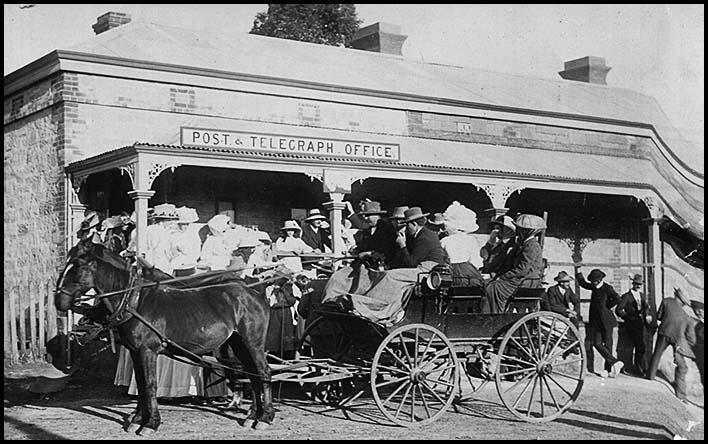 From a postcard with the images taken by Latte Marner. |
